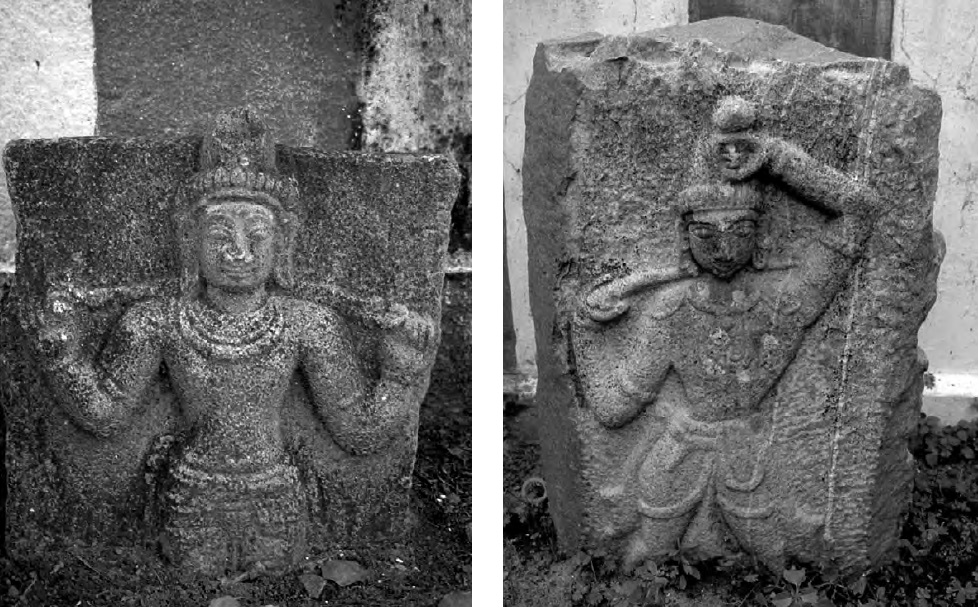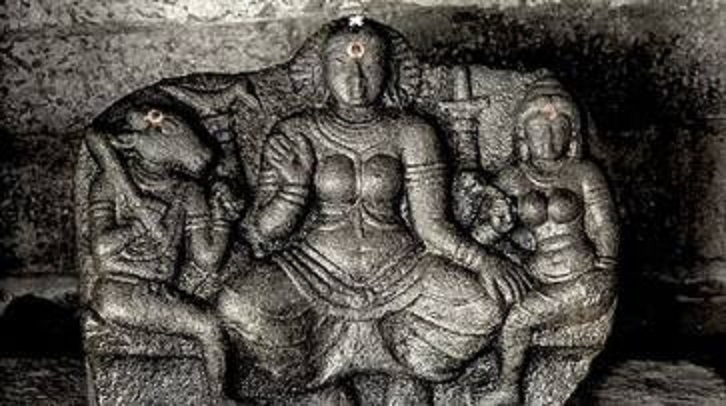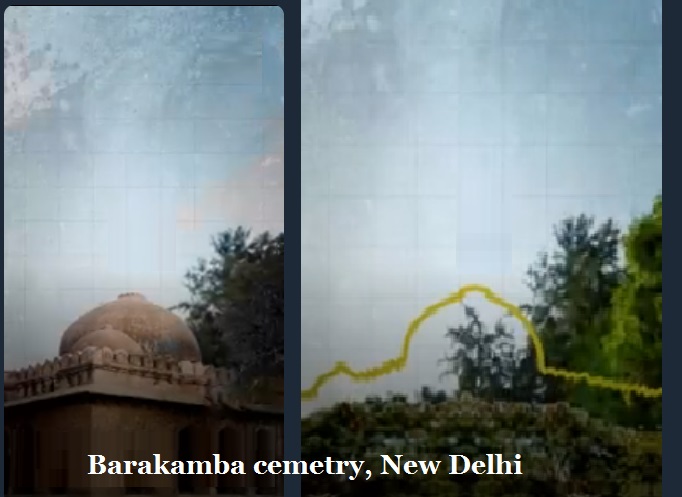The origin, development and importance of Memorial-stones in India (2)

The place where erected: Similarly, the place where the memorial stones were erected has also been a part of research studies.
- Generally, where the person attained martyrdom, that spot was chosen for erecting the hero-stone.
- The scholarly tradition[1] maintains that a hero-stone was raised on the spot where the hero fell or where his remains were buried, or alternatively in his native village or in the place where his relatives lived.
- However, they we either disturbed or shifted to other convenient places.
- The current position of the materials, however, hardly corresponds to the original one. Many have been relocated inside museums or temple premises, either as freestanding elements or as structural components; but even when found at the crossroads of hamlets, under trees or next to water reserves, one cannot ignore that some transformative process must have intervened over the centuries and reshaped the landscape (e.g. due to the construction of a new road, or to cropland expansion).
- Archaeological excavations never occurred systematically in the past, so that at present, threatened by increasing urbanization, the veracity of both primary and secondary sources on this issue is de facto unascertainable.
- Formation of new states / countries and vandalism also responsible for the disturbance or even destruction of hero-stones.
These erected stones at the villages and remote areas might have become distant or deserted places, due to urbanization etc., and thus, slowly neglected and forgotten. The enthusiastic explorers and others, very often claim that they “discovered” the hero-stones and so on!

Stone usage in the Megalith burials and tribals: Man and stone-usage cannot be separated. Modernism and urbanization might have changed the life-style, but, its usage continues, as could be noted, at least in the kitchens. In India, every group of people follow certain “samskaras” traditional rites, rituals and ceremonies where, stones play an important role. ‘Megalithism’ may be considered as a living tradition in India, as the practice of erecting megaliths in honour of the dead is still found among the tribals living in northeastern, eastern, central and south India like the Khasis and the Garos and the Syntengs of Meghalaya, the Tiwas and the Karbis of Assam, the Nagas of Manipur and Nagaland, the Hos and the Mundas of Chota Nagpur, the Gonds and the Morias of Chattisgarh, the Kurumbas of Kerala, the Bondos and the Gadabas of Orissa and the Savaras of Andhra Pradesh and Orissa. Thus, its prevalence in all states can be noted.

Hero-tones in South India: The earliest and oldest of such memorial hero stones is found in the Indian state of Tamil Nadu is more than 2400 years old that is 4th century BCE. According to the historian Upinder Singh, the largest concentration of such memorial stones is found in the Indian state of Karnataka. About two thousand six hundred and fifty hero stones, the earliest in Karnataka is dated to the 5th century CE. The custom of erecting memorial stones dates back to the Iron Age (400 BCE) though a vast majority were erected between the 4th century BCE to 13th century CE. During this period, the dynasties were fighting with each other, and later I the medieval period resisting the Arab / Mohammedan intrusion into South India. Thus, the Hero-stones inculcated the memory of fallen heroes for their sacrifices to protect their boundaries, properties and power.

Sati – Widow burning was prevalent among all the ancient civilizations: It has been argued by them that sati, now popularly known and understood as the practice of widow-burning did not originate from the ancient Indians, as it is commonly believed and propagated, but had roots in the ancient Egypt, Greek, and other European civilizations. It was among the Gauls, the Goths, the Norwegians, the Celts, the Slavs and the Tharcians. In Egypt, the processions of a king, Pharaoh were buried along with him or a pyramid built over his body, while in Greece women entered into the pyres of their dead husbands. Similar pyre sacrifices were prevalent among almost all ethnic groups of Europe. In China, if a widow killed herself in order to follow her dead husband to heaven, her corpse was taken out in a great procession[2]. Col. James Tod mentions that Female immolation originated with the Sun-worshipping Saivas and was common to all those nations who adored this as the most splendid object of the visible creation[3]. Here, also, the terms and expressions used have to be understood properly:
- Sati – Voluntary self-immolation of wife. Getting into a pyre voluntarily, “Udankattai-erudhal” as mentioned in Tamil.
- Sati – Widow burning – Sometimes, interpreted as forced (as interpreted from Mohammedan and colonial writers).
- Jauhar, sometimes spelt Jowhar or Juhar, was a Hindu Rajput practice of mass self-immolation by females, both adults and children, in the Indian subcontinent to avoid capture, enslavement and rape by Turko-Persian Islamic invaders, when facing certain defeat during a war.

Satikal prominent in and around Rajasthan area: Sati and hero-stones are important and studied in the context. Rajasthan, and nearby areas are prominent with Satikal, because of the Mohammedan atrocities, as they are well-known, they are not discussed. The hero-stones from Central India have emerged from a tribal context and concern tribal chiefs. They are invaluable in understanding attitudes to death and belief patterns of tribes. The hero-stones from Western India reflect the physical and social ecology of the area in their pictographic context. Those that depict cattle raids in their lowest panel are understood as indicators of a dominant pastoral economy of the past. These hero-stones are found only in a specific area of the semi-arid tract of Western India. The hero and sati stones are largely found in Western, Central and Southern India. From Rajasthan We basically two types of hero-stones found. They are Paliyas (single panelled stones) and the Govardhan pillars that have a sculpted top. Sati practice is found in the Tamilndu also as recorded in the literature and inscriptions[4].
Why there were more hero-stones in Karnataka?: The relation between death and memorial stones and glorifying death and other concepts are inter-related and highly spiritual also. S. Settar pointed out[5] how the Jains identified eight types of death grouped under three categories –
- Bala-marana – childish or foolish death
- Pandita marana – wise death and
- Pandita-pantita marana – the wisest of wise deaths
Then there are other types of marana –
- Sanyasana-marana – death through renunciation
- Sallekhana-marana – death through fasting
- Ardhana-marana – death through worship
- Pancapada-marana – death through prayer
- Pantita-marana – death through knowledge or wisdom
- Samadhi-marana – death through mediation etc.,
The Jains used to debate with the Buddhists and Hindus setting “death” as a precondition for the defeated. The Karnaka inscriptions show how the defeated were crushed in oil-mills. However, to glorify them, hero-stones might have been erected for them. Thus, the Jaina literature has elaborately dealt with death and also the Jains erecting monuments for the dead. As the Jains were dominant in Karanaka during the medieval period, the hero-stones were also found maximum there.

The Govardhan pillars: The Govardhan pillars are memorials for those who died in a cattle raid, but battle scene are also depicted at times. Sri Krishna lifted the Govardhan hill and saved people – thus, lifting the Govrdhan hill is considered as a Herculean task and thus, the name “Govardhan pillar”! A sati would normally be shown by depiction of a couple facing each other. Chronologically, these stones would fall within the 6th to 7th and 13th-14th century CE periods. The Saurashtra series is of a relatively recent period, belonging to the last three to four hundred years (16th-17th centuries). Here the most frequent occurrence is of Paliyas. The Paliyas are normally linked to cattle raids, skirmishes and village disputes. This is similar to the cattle seizing, cattle raiding and cattle recovering practices of the ancient Tamil Sangam people[6]. South India and Maharashtra can be easily termed as the heartland of hero-stones. The hero-stones from Tamil Nadu fall roughly within the 6th to the 12th century CE.
© K. V. Ramakrishna Rao
09-05-2024

[1] Vanamamalai, N. 1975. Herostone Worship in Ancient South India, In Social Scientist, 3, 10, pp. 40-46.
[2] C. H. Tawney, Kathasaritsaaara, Vol.I, Terminal Essay on Suttee by Pensei, Appendix – I, pp.255-272. He pointed out that such practice was there among all the ancient civilizations.
[3] Col. James Tod, Annals and Antiquities of Rajasthan , Motilal Bararasidas, New Delhi, Vol.II, 1971, p.737.
[4] K. V. Ramakrishna Rao, Sati In Ancient Tamil Literature , A paper presented at 11th session of South Indian History Congress held at Calicut from February 1st -3rd , 1991.
https://archive.org/details/SatiInAncientTamilLiteratureK.V.RamakrishnaRao
[5] Shadakshari Settar, Inviting death – Indian attitude towards the ritual death, Brill, Vol.28, 1989.
[6] K. V. Ramakrishna Rao, Cattle Raiding In Sangam Age, the paper was presented at the 12th session of South Indian History Congress held at Karnatak University, Dharwad from November 9-11, 1991 https://archive.org/details/CattleRaidingInSangamAgeK.V.RamakrishnaRao
When I presented this paper, there was a discussion in which S. Settar asked many questions about Hero-stones of Tamilagam etc.
Filed under: academic, academicia, agrarian, agriculture, ahimsa, alloy, archaeological remains, archaeological sites, archaeology, artifact, atma, soul, spirit, spiritual, state, statue, stone, Swetambara, tamil, Tamil Brahmi, tamil chauvinism, tamili, tamilnadu, telangana, telengana, terracotta, terracotta figurine, theistic, tibet, transmigration, transmigration of soul, tribal, tribe, update, violence, virtual, waste, water, wheel, wood, young | Tagged: atma, body, cremation, dead, death, funeral, hero stone, hero-stone, hero.stone, hindu-temples, history, India, life after death, massacre, memorial for death, memorial stone, soul, stone, temple, transmigration, transmigration of soul, travel | Leave a comment »


































































































































